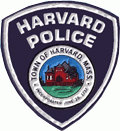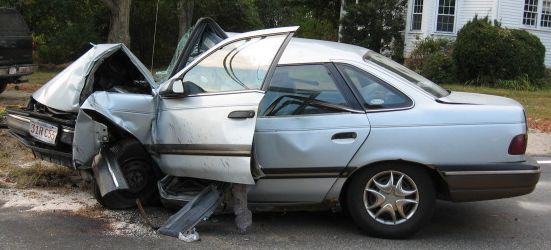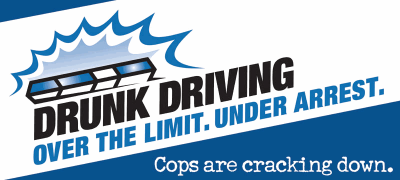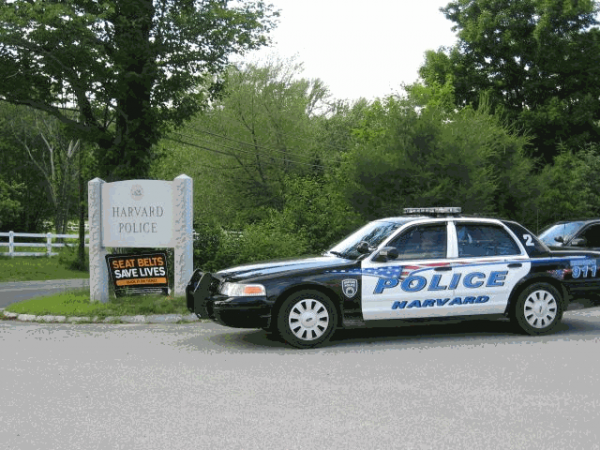Traffic Enforcement

Traffic Safety Enforcement is an important aspect of community policing in the Town of Harvard. We constantly stride to improve the quality of life here in Harvard and thus we have a strict traffic enforcement policy. To aid the public in understanding the importance of maintaining a safe speed in our commnity, the following chart was devised.
How long would it take to stop your vehicle?
SPEED | LENGTH OF SKID | TRAVELING (Velocity) |
|---|---|---|
25 mph | 32 feet | 36.67 Feet per Second |
30 mph | 46 feet | 44.00 Feet per Second |
40 mph | 82 feet | 58.67 Feet per Second |
50 mph | 128 feet | 73.33 Feet per Second |

Crash involving excessive speed and drugs on RTE 110 Ayer Road
MYTHS AND FACTS ABOUT TRAFFIC ENFORCEMENT
Most people have experienced the “oh no” feeling after seeing a police car in the rear view mirror. Most people hit their brakes, even if they were not speeding. Personal physical reactions and experiences can influence perceptions of traffic enforcement efforts, and often prevent people from realizing its true benefits.
Traffic enforcement is the most recognizable and universal police function. Marked police cars are easy to see and most Americans have been stopped for a traffic violation. Because of the punitive consequences attached to traffic enforcement, many do not have an appreciation for the positive benefits. Additionally, “myths” can result from misconceptions about the goals and motivations of traffic enforcement.
We need to dispel the myths and know the facts.
MYTH
All police officers enforce traffic laws.
FACT
Because traffic enforcement is so visible, the public perceives that there are a large number of officers enforcing traffic laws. Some agencies have a few officers dedicated to traffic enforcement. However, in most agencies, traffic enforcement is one of many responsibilities most officers perform.
MYTH
Traffic officers just write speeding tickets.
FACT
Speeding is a serious offense when you examine the facts:
Contributing Factors to Fatal Crashes
- Driving too fast for conditions or in excess of posted speed limits
- Source: Traffic Safety Facts 1995, U.S. Department of Transportation
FACT
Speeding is one of the most common offenses committed by the aggressive driver.
Contributing Factors to Fatal Crashes
- Operating vehicle in erratic, reckless, careless, or negligent manner
- Source: Traffic Safety Facts 1995, U.S. Department of Transportation
FACT
Traffic officers remove impaired drivers from the road.
Alcohol-Related Fatal and Injury Crashes

- 41% Alcohol-related: 15,386 of 37,221 fatal crashes
- 9% Alcohol-related: 195,000 of 2,166,000 injury crashes
FACT
Traffic officers enforce occupant protection laws.
Fatalities and Injuries: Occupant Protection Usage
- Occupants wearing safety belts: 2,357,000 of 3,112,000 injuries
- Occupants not wearing safety belts: 19,099 of 31,897 fatalities
- Source: Traffic Safety Facts 1995, U.S. Department of Transportation

MYTH
Traffic problems are not that big of a deal.
FACT
The U.S. Department of Transportation’s National Highway Traffic Safety Administration today released the Early Estimate of Motor Vehicle Traffic Fatalities for the First Half (January-June) of 2021, which shows the largest six-month increase ever recorded in the Fatality Analysis Reporting System’s history. An estimated 20,160 people died in motor vehicle crashes in the first half of 2021, up 18.4% over 2020. That’s the largest number of projected fatalities in that time period since 2006.
“This is a crisis. More than 20,000 people died on U.S. roads in the first six months of 2021, leaving countless loved ones behind. We cannot and should not accept these fatalities as simply a part of everyday life in America,” said United States Transportation Secretary Pete Buttigieg. “Today we are announcing that we will produce the Department’s first ever National Roadway Safety Strategy to identify action steps for everyone working to save lives on the road. No one will accomplish this alone. It will take all levels of government, industries, advocates, engineers, and communities across the country working together toward the day when family members no longer have to say goodbye to loved ones because of a traffic crash.”
MYTH
If I am injured in a traffic crash, it affects only me.
FACT
Everyone pays for traffic crashes and the economic costs are significantly more than crime. In 1995, crashes cost Americans $150 billion. In 1993, personal and property crimes cost Americans $19 million (Source: The Economic Cost of Motor Vehicle Crashes 1994, U.S. Department of Transportation, Criminal Victimization in the United States 1993, U.S. Department of Justice).
MYTH
Police officers should be arresting criminals, not writing traffic tickets.
FACT
Traffic enforcement regularly identifies criminals and results in their apprehension.
A license plate violation resulted in the apprehension of the suspect in the Oklahoma City federal building bombing. During 1994, traffic enforcement stops in Grand Prairie, Texas accounted for 66 percent of all warrant arrests and 50 percent of the arrests made for non-traffic related offenses.
In Peoria, Illinois, during 1994 and 1995, an increase in traffic enforcement contributed to a six percent decrease in violent crimes and a 12 percent decrease in crashes.
FACT
Drugs, weapons, contraband, fugitives, and illegal aliens are frequently found in vehicles during “routine” traffic stops.
During routine traffic stops in Harvard, numerous suspects were taken in custody for warrants, fugitives from justice
Illegal Possession of Drugs, Suspects wanted in numerous house and business breaks in town and surrounding communities.
Support Traffic Enforcement
When you see a car pulled over, remember that the law enforcement officer may be doing more than writing a traffic citation. The officer may be apprehending a felon, child molester, or a murderer, or removing weapons and drugs from your community.
Traffic enforcement can and does contribute to the quality of life in your community.
- Communities can realize the benefits of traffic enforcement and highway safety efforts;
- Roads and neighborhoods will be safer;
- Police agencies can effectively police their communities; and
- Highway safety partners will recognize similar goals and develop cooperative efforts.

